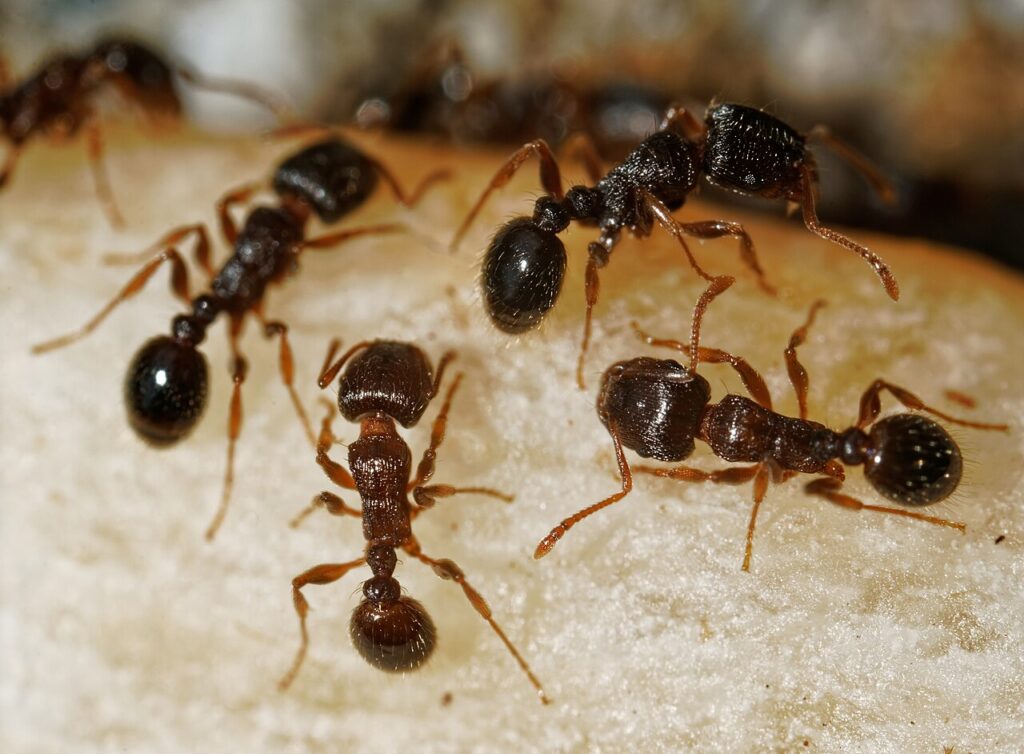
Appearance
Pavement ants (Tetramorium immigrans) are small, measuring about 1/8 inch long, and exhibit a color range from light brown to black. They are characterized by their distinct parallel lines on the head and thorax. These ants typically nest in soil beneath stones, pavements, and concrete foundations, though they can also be found in walls and under floors. They are known for their slow movement and are a common nuisance, especially in homes with slab-on-grade construction, where they can easily enter through cracks in the concrete.
Behavior and Habitat of Pavement Ants
Pavement ants are primarily foragers and do not follow the established trails common to other ant species. Instead, they search for food individually, which can make them harder to control once they infiltrate a building. Their diet includes a variety of substances, but they are particularly attracted to sugary materials and grease.
Control of Pavement Ants
Effective management of pavement ant infestations involves a combination of methods:
- Residual Sprays: Whenever possible, apply residual insecticides directly into the entry points. Drilling into surfaces may be necessary to ensure effective treatment.
- Baits: In cases where ants enter through heating ducts, baiting can be more effective. Ant baits are designed to attract and poison the workers, which will then bring the toxic material back to the nest, ultimately impacting the entire colony.
- Sticky Traps: Glue boards can capture pavement ants; however, these traps may quickly become ineffective due to dust and debris accumulation.
- Regular Treatments: Regularly treating visible ant mounds along sidewalks and driveways can significantly reduce the likelihood of ants moving indoors. It is essential to maintain a proactive approach, especially during peak foraging seasons.
Additional Information
Pavement ants are part of a larger group of ants that display remarkable adaptability to various environments. They are prevalent in urban areas, often found in parks, gardens, and residential properties. Understanding their behavior and nesting habits is crucial for effective control and prevention.
While pavement ants are generally not harmful, their presence can be unsettling, especially when they invade homes. Regular inspections and timely interventions can keep these pests at bay. If you encounter a significant infestation or if DIY methods prove ineffective, it may be beneficial to consult a professional pest control service for assistance.
Conclusion
Pavement ants, while small, can become a significant nuisance in both residential and commercial properties. By understanding their habits and employing effective control measures, you can manage and prevent these pests from invading your space. For ongoing pest management and prevention tips, consider consulting with Traffic Pest Solutions, your trusted partner for tailored pest control solutions in Santa Clarita.
